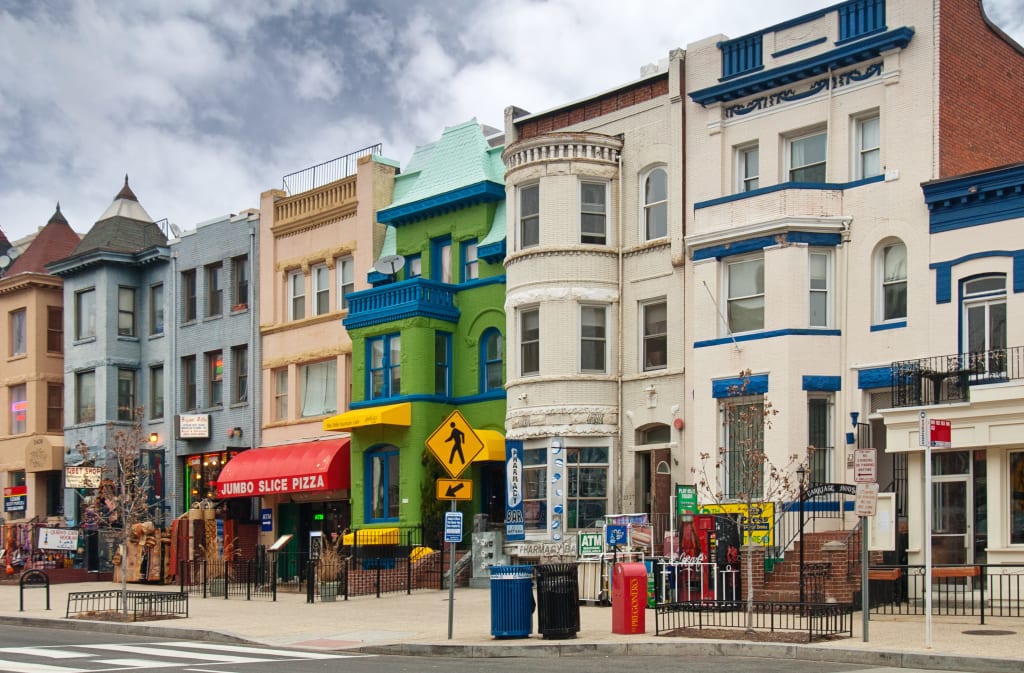Revitalization …. it’s happening in cities across the country from Atlanta to Detroit to Memphis. As reflected in census data, a diverse mix of residents are moving into urban areas, bringing new life to once neglected neighborhoods. And companies are moving back as well, in part to better appeal to young professionals. In Chicago, McDonalds moved their headquarters out of the suburbs and back to the West Loop of Chicago, joining Heinz and ADM. And housing prices are responding. Urban zip codes across the country continue to report double digit or even triple-digit ROIs on flipping projects. Housing in neighborhoods previously considered transitional is hitting high water marks in price, and drastic reductions in days on market. In addition, housing inventory in the US is near the lowest level in decades. Infill development simply makes sense for addressing all of these issues. This type of revitalization maximizes efficiency by renovating aging housing stock and developing vacant lots, and makes both economic and environmental sense. And it brings myriad opportunities for real estate developers as well as private lenders.
From Cities to Suburbs and Back
In ancient times, cities developed along rivers and trade routes. They created a commerce hub and their compact design was practical and protected their citizens. Today, cities serve a modern version of much the same purpose: a commerce and transit hub that uses land and resources efficiently. Interestingly, the suburbs were never far behind the development of the cities. Some of the earliest suburbs were located outside the ancient city of Rome. Living outside the city was considered living in suburbium or “below or outside the city walls”. Although residents traded the relative safety and convenience of living within a walled city, life outside the walls was cheaper and less crowded. By the mid-1800’s, London was the largest city in the world, and the trend to move away from the crowded and unsanitary urban conditions increased with the development and expansion of public transportation.
 In the United States, the end of World War II brought rapid economic expansion and a housing shortage that pushed large numbers of middle class families outside the cities into planned and newly constructed suburban communities. This timing also dovetailed with the large-scale adaptation of manufacturing technology to mass-produce housing, so creating “cookie-cutter” neighborhoods was easier and cheaper than ever before. The media portrayed moving to the suburbs and owning your own single family home, yard, and car as a middle class “American Dream”. However, some of Americas largest and most vibrant cities started to empty out as a result of this suburbanization.
In the United States, the end of World War II brought rapid economic expansion and a housing shortage that pushed large numbers of middle class families outside the cities into planned and newly constructed suburban communities. This timing also dovetailed with the large-scale adaptation of manufacturing technology to mass-produce housing, so creating “cookie-cutter” neighborhoods was easier and cheaper than ever before. The media portrayed moving to the suburbs and owning your own single family home, yard, and car as a middle class “American Dream”. However, some of Americas largest and most vibrant cities started to empty out as a result of this suburbanization.
From the 1960’s to the 1990’s, suburbanization led to population drops and a general hollowing out of cities, with increases in blighted or abandoned homes, losses of restaurants and retail options, and decreases in public transportation as well as school quality and choices. But since the 1990s, the trend has generally reversed. In addition, the smart growth and town center concepts have become increasingly popular in the suburbs. These ideas have integrated more pedestrian-friendly shopping and amenities as well as jobs into some suburban areas, and have increased the transportation options between many suburbs and cities. Other suburbs have simply been integrated into the cities they used to surround as the cities continued to spread outward. And some of the largest US suburbs such as Virginia Beach, VA and Mesa, AZ have largely become their own cities, with populations greater than some of America’s oldest and largest true cities.
From Baby Boomers to Millennials and GenXers in-between, many home buyers recognize and appreciate the value of smaller yards, shorter commutes, and walkability found in urban areas. The millennial’s rate of car ownership is the smallest of any generation, making urban living more practical. More baby boomers than ever are choosing to stay in cities or small towns and “age in place” rather than move to traditional retirement areas which tend to be sprawling suburban communities. GenXers, in their peak earning years, are primarily following jobs, which tend to be in more urban areas. All of these trends have led to more people across all generations moving back into the cities or urban centers or not ever leaving them to begin with.
How Does This Affect Private Lending?
While increasing numbers of people have been resettling in cities for the last 20+ years, another trend has become clear. While they appreciate the charm, history and convenience of cities and the housing stock in them, homeowners largely don’t have the time, knowledge or interest in remodeling the older urban homes themselves. The National Association of Realtors increasingly reports that urban buyers want everything to be already renovated and updated when they move in. Millennials are often coming from apartments full of new furnishings and amenities and don’t want to settle for less. GenXers are busy with kids and careers, and the Silver Generation is largely of retirement age. This leaves a lot of room and opportunity for home renovators or flippers to create the “move-in ready” homes that buyers want. According to ATTOM and other national flipping data, many urban neighborhoods and zip codes have flipping rates of 25% or more of all houses sold. When roughly one in every four houses sold in a neighborhood is a flip, that neighborhood is transforming quickly and has lots of opportunity for private lenders to fund projects.

Infill Development – Supply, Consistency and Velocity
Most cities have a large supply of houses more than 50 years old that need varying degrees of renovation, as well as many neglected buildings and vacant lots. Infill development is largely defined as the process of developing vacant properties within existing urban areas, though the definition is often expanded to include major refurbishing of existing homes or buildings as well. The many benefits of infill development have been widely reported and accepted for years. Harvard University’s Urban Infill Housing Report states simply that “urban infill housing sparks neighborhood revitalization” and includes the many benefits: reusing existing properties which are often eyesores, using existing infrastructure, bringing tax dollars to local governments, revitalizing inner-city communities, using public funds efficiently, and supporting mass transit and other amenities.
One of the things that private lenders like about urban neighborhoods is the volume and the consistency of the housing stock there. For example, there are roughly 5,000 Wardman row houses in the Petworth neighborhood of NW Washington DC built between 1910 and 1920, of which an estimated 4,000 are still in need of renovation. And, because of the consistency in size, style, and velocity of trades, it’s easy to determine what one of these houses should sell for “as-is” and what one should sell for “after renovation” as well as how quickly it will trade. That’s valuable information for lenders to know when deciding whether to fund a flip there. And that’s just one neighborhood in one city in the US. The density of US cities makes funding flips in them vs. in the suburbs easier and more cost effective for real estate investors as well as private lenders.
Infill Development is Here to Stay
In order to encourage and facilitate revitalization, there are numerous federal, state and city programs to help even small scale flipper and developers renovate infill properties. Property tax abatement, greater density allowances, speedy approval of projects, assistance with permitting in historic areas, gap financing, and fee waivers for infrastructure hookups are a few of the incentives offered across the country. In Memphis, the DMC (Downtown Memphis Commission) practiced what they called strategic market intervention to save a century-old Main Street building. They bought the property and then resold it at a substantial discount to a developer who promised to create an approved and vibrant mixed-use building.
While the suburbs and rural areas of the country will always fill a need and appeal to many, the renewed appeal of urban centers is here to stay. Which means revitalizing neighborhoods is here to stay as well, primarily through infill development. There are now even infill models for aging suburban communities, following much the same model as the urban infill model. By providing capital to infill developers, private lenders contribute greatly to the revitalization of cities across the US.












Leave A Comment